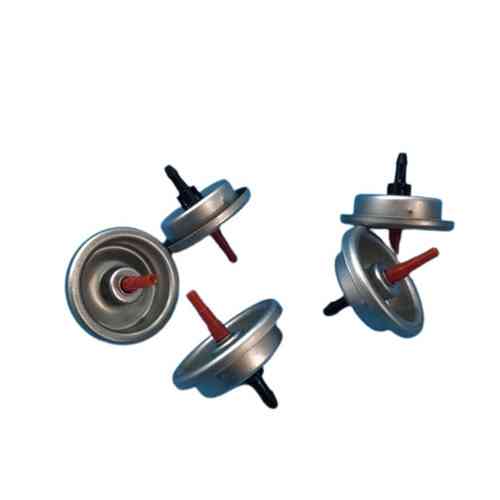Can Bluefirecans Packaging Notes Improve Household Aerosol Recycling Rates

Packaging shapes the story of end of life handling, and a single emptied Aerosol Can can mean either recyclable metal or a hazardous item depending on how it is handled. Around the world recycling systems treat these containers differently, and knowing the local pathway keeps workers safe and helps recover metal instead of sending useful material to landfill. This article looks at how several countries and regions handle aerosol cans, highlights common safety rules, and explains what consumers and businesses can do to make recycling work better for everyone.
In some countries regulators and industry have worked to make recycling simpler by treating empty cans as a recoverable packaging stream rather than a special waste every time. That approach encourages inclusion of emptied aerosols in household metal recycling where collection systems separate and recover steel and aluminium at sorting facilities. Where programs succeed, the value of recycled metal supports collection and lowers the pressure on disposal systems.
In the United States the regulatory environment around aerosol cans has shifted toward clearer handling rules for generators and waste managers. Agencies now recognize that emptied cans can be handled in a streamlined way under specific frameworks that reduce regulatory burden for businesses while keeping hazardous residues controlled. For partly used or intact cans, established hazardous waste pathways and return options remain important to prevent unsafe puncturing or disposal.
In the United Kingdom and many neighbourhoods in Europe the practical message is simple: empty aerosol cans usually belong with household metal recycling but only when genuinely empty and free of residue. Local guidance asks residents not to puncture or crush cans and to detach any loose parts such as lids before recycling. Consumer confusion remains a challenge, so clear on pack instructions and local council communications are central to getting more cans into metal recovery streams rather than residual waste.
Australia shows how local approaches vary by municipality. Many councils accept empty aerosol cans in household recycling bins while others ask residents to bring partially full or suspect units to dedicated collection points. National industry groups promote recycling as the preferred route for empty containers while stressing safety checks and the need to follow local rules. That local nuance is why working with collection partners and checking council guidance is a practical first step for residents and businesses.
Handling and safety rules are shared across countries because mistakes can cause serious incidents during collection and at recycling facilities. Partly full or pressurised cans may be treated as hazardous waste and should not be placed in household recycling. Operators and households are also advised not to puncture, crush, or incinerate cans because residual propellants and liquids can ignite or release harmful vapours. Treating suspect units as hazardous and routing them to designated collection or household hazardous waste facilities protects workers and infrastructure.
How materials are recovered once cans reach a facility also varies. In many systems metal sorting lines separate steel and aluminium for feed back into manufacturing. Some specialist processors accept bulk collections of emptied aerosols and use controlled depressurization and mechanical separation so valves, caps, and coatings are handled safely. These industrial steps return raw material value while avoiding uncontrolled release of contents during shredding and compaction. Industry groups support these methods as a pathway to reclaim metals while keeping handlers safe.
Public education and clear packaging labels matter a great deal. Where campaigns and product labels explain that cans must be empty, show a quick pictogram for removing caps, and explain the local drop off or kerbside protocol, recycling rates and safety both improve. Retailers and manufacturers can help by including simple, consistent disposal notes on packaging, and by participating in or publicising take back and collection programs where they exist. That practical alignment between makers, sellers, and local authorities reduces confusion and prevents hazardous items from entering ordinary waste streams.
For businesses and large generators the right logistics make a big difference. Contracting with certified collectors, using dedicated storage that keeps suspect items separate, and keeping records of batch returns to authorised processors reduce operational risk. Many firms include short staff training and a simple arrival checklist so that any partly filled aerosol is diverted to the correct hazardous collection route and only emptied, intact cans proceed to the metal recycling stream.
What can consumers do today? First, check your local recycling guidance and follow the instructions about whether emptied aerosols go in the household bin or to a drop off point. Do not puncture or crush cans. Keep caps and loose parts separate if requested by local rules. When in doubt bring unused or partly full cans to household hazardous waste events or authorised collection centres rather than putting them in ordinary waste or kerbside recycling.
Recycling practice is evolving and public discussion about circular packaging continues to spur improvements. Product makers and recyclers are working on clearer labeling, improved collection offers, and safer processing methods so that the metal in aerosol containers has a good chance of returning to productive use. If you manage product lines or run a collection program, established supplier and industry portals often publish guidance about valve types, packing for returns, and approved processors; for practical handling notes and product detail that help with collection and recycling decisions see industry resources and supplier pages such as those available through the aerosol valve and parts category on the manufacturer portal at https://www.bluefirecans.com/ which gathers practical valve notes and handling guidance for buyers and waste managers.
- Art
- Causes
- Crafts
- Dance
- Drinks
- Film
- Fitness
- Food
- Giochi
- Gardening
- Health
- Home
- Literature
- Music
- Networking
- Altre informazioni
- Party
- Religion
- Shopping
- Sports
- Theater
- Wellness



